FROM NORWEGIAN FOLK MUSEUM
Norwegian Folk Museum is these days featuring a less common theme: the urban part of Norway. The focus is mainly on the 17th and 18th century, how everyday life was, how basically every Norwegian city is by the sea and has gotten impulses from shipping and traveling, and how it was interpreted locally. It's the starting point of what will become a permanent exhibition in 2014, when they will have renovated one of their major buildings. The exhibition is called "Hvor er herr Siboni?" (Where is Mr. Siboni?), and will be open until December 2011. sneprinsesse, we ought to take a study trip together. Then we get to mock the wrongly laced pair of bodices too. ;)
Apart from interesting artifacts, they have a couple of attires from their gorgeous collection on display. These are almost never seen, so it was a treat to both see them in person and to get to take pictures of them. Inspired of all the "Fashioning Fashion" pictures emerging, I tried to take as detailed pictures as possible. It was not too easy through the glass, but some turned out very well.
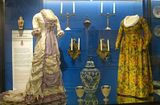
One of the displays with dresses and artifacts
1750/1790: Yellow Spitafield silk dress

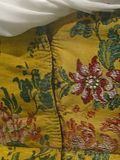
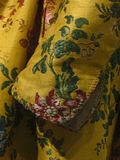
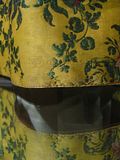
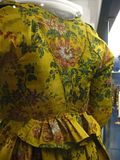

This yellow dress has been on display before, in an exhibition called "Ingenting forsvinner" (Nothing disappears). My notes from back then tells that is was originally made sometime around 1750, but redone in the 1790s to fit the higher-waisted, narrower ideals. The remodeling was the reason why it was on display last time around. Back then they only showed the back. This time around I got to see the front too, which was cool. The front opens to around the navel area, and seemed to be closed by small hooks and eyes. The back shows a nice transaction from flounced jackets to the small pleats that remained in the back of the Regency jackets. The very first picture shows the colours most accurately.
On the museum's web site: http://www.primusweb.no/things/kjole/NF/NF.1898-0050?pos=659
1775-1790: Man's banyan of green patterned silk damask lined with yellow silk

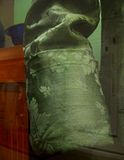
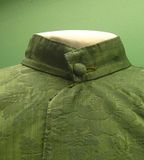
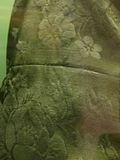
On the museum's web site: http://www.primusweb.no/things/slabrok/NF/NF.1973-0368?pos=1
1810-20: Man's attire, consisting of white embroidered trousers, blue wool jacket and stripy rust vest

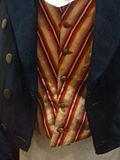
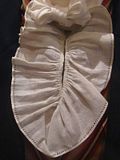
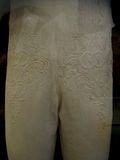
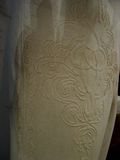
The white embroidery on the white trousers was very, very nice, and a cool contrast to the stripy vest and wool cloth jacket.
1870s: Stripy grey/pigeon blue silk dress with wine red brocade (?) and machine made lace.
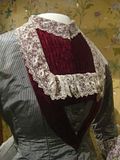

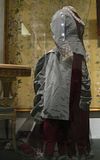
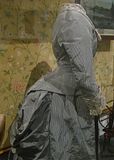



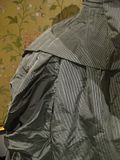
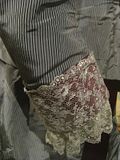
This dress was made of such a nice stripy silk, and had a fantastic bustle curve and pointed bodice back. Not too crazy about the bodice front, but love the unusual colour combination.
1870s and 1890: Trimmed silk dress for a lady, pink dress for a little girl
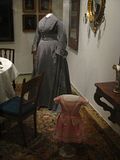

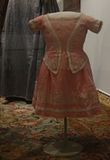
The lady's dress belonged to Andrine Tengberg (1825-1917). The bodice is lined with linen, while the skirt is lined with cotton. It has pipings on hem, neck opening and other places of a slightly lighter wool (though it looked more shiny in real life). The little girl's dress is of pink cotton.
At the museum's web site:
http://www.primusweb.no/things/kjole-kjoleliv-skjrt-og-belte-/NF/NF.1952-1117AC?pos=34
http://www.primusweb.no/things/kjole/NF/NF.1915-1961?pos=215
ca. 1875-1880: Ivory silk dress with lavender trims and pleated hem. Lined with linen.
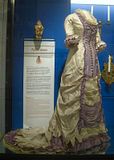
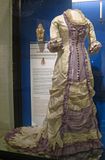
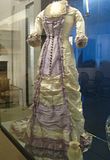

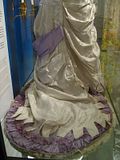
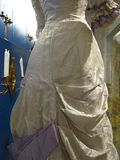
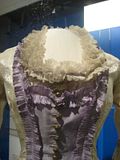
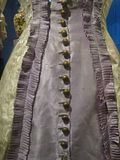
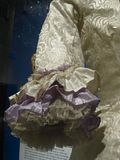
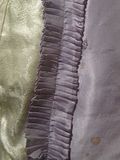
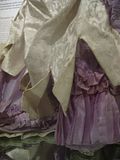
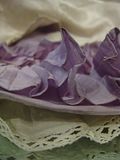
The construction of this dress fascinated be. I loved how the natural form lines of the bodice seamlessly continued into the skirt, while still managing those nice drapes over the hips. I must say it looked even nicer live than in my photos. Natural form dresses usually aren't my favourites, but I was fascinated by the various seams and details in this one.
In the museum website: http://www.primusweb.no/things/kjole/NF/NF.1935-0015?pos=432
1885-90: Small boy's attire of white machine embroidered lace fabric
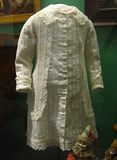
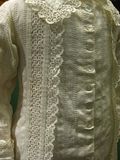
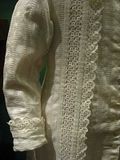
"Where is Mr. Siboni? A journey through rooms of the past", at Norsk Folkemuseum:
http://www.norskfolkemuseum.no/no/utstillinger/Temautstillinger/Hvor-er-Hr-Siboni/
And to finish off this post with a quote by Holberg: "If no other use would be found in tea and coffee, it would be this, that drunkenness (...) is passé. Now our wives and daughters can do 10 house calls a day and still come home sober."